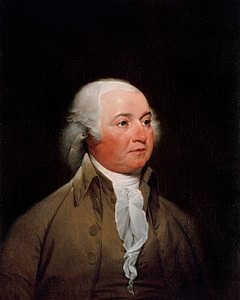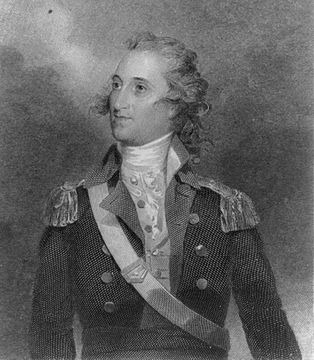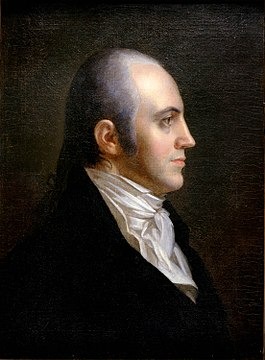Early Electoral Chaos and Party Loyalty, Part I
- PJ Springer

- Apr 10, 2020
- 4 min read
When it comes to bizarre electoral outcomes, one would be hard-pressed to find a stranger results than the ones found early in the republic. Many of the elements of the electoral process that we take for granted were substantially different, because the Twelfth Amendment was not ratified until 1804. This includes the fact that only a handful of the states canvassed popular votes for the determination of how electoral votes would be cast. States often split their electoral votes between multiple candidates. There was no such thing as a party ticket in the early elections—the president and vice-president were the two individuals who garnered the most electoral votes, regardless of their political affiliation.

In 1796, the United States held what might be considered the first true presidential election. George Washington served as the nation’s first president, to be sure, but he was unanimously selected in both of the elections that he faced—meaning that in 1788 and 1792, the only real contest was for the vice presidency. But, when Washington announced his intention to retire, there was a significant amount of turmoil regarding his successor. Should the office fall to Vice President John Adams of Massachusetts? Or should it go to Thomas Jefferson, his very active Secretary of State, who like Washington hailed from Virginia? Although the men had been on friendly terms during the Revolutionary War, they had differed substantially on major policy questions during the Washington administration. Adams, who aligned with the Federalists, believed that the nation required a strong central government, both to keep it safe from external interference, and to ensure that the states did not fall to open conflict with one another. Jefferson believed that the states should rule supreme, and only a handful of essential functions should be conducted by the federal government. Those who supported his view formed the Democratic-Republicans, largely in opposition to the Federalists. Jefferson was the unquestioned head of his organization—but the same cannot be said for Adams, who held a lingering suspicion that political parties were an inherently bad idea. Thus, the intellectual leadership of the Federalists fell to Alexander Hamilton, the former Secretary of the Treasury under Washington.

Over the course of his career, Hamilton managed to engage in feuds with a wide variety of political enemies, many of them former allies. For that reason alone, the stunning popularity of the Broadway production Hamilton continues to confuse me—although perhaps the songs really are catchy enough to make one forget what a terrible human being he really was. By 1796, Hamilton had come to loathe Jefferson, but he was no fan of Adams, either—and he was fairly certain that an Adams presidency would be only the slightly better option of the two. So, he hatched a plan to effectively subvert the election, and steal it for a candidate of his own preference, Thomas Pinckney of South Carolina. Pinckney, most well-know for having negotiated the Treaty of San Lorenzo that, among other things, established the US-Florida border, was not Hamilton’s first choice, but he was preferable to the other serious contenders.
Hamilton’s plan revolved around the inherent rules of the election. Most observers presumed that a Federalist elector would cast one vote for Adams, and one vote for Pinckney. Of course, if all of the electors followed that same pattern, a tie would result—and so, in theory, the party coordinated at least one elector to cast their second vote for someone else, with the result that their preferred candidates would win first and second place in the election. Hamilton encouraged all of the Federalist electors to follow this pattern, but then worked to convince the electors from South Carolina, Pinckney’s home state, to cast one vote for Jefferson and one for Pinckney. Of course, this would mean said electors failed to cast a vote for the Democratic-Republican candidate for vice president, Aaron Burr of New York. But, if everything worked according to Hamilton’s plan, Pinckney would barely eke out a win over Adams, and Hamilton would have the opportunity to heavily influence, if not control, the president of the United States.

Communications being as slow as they were in 1796, it comes as little surprise to the modern observer that things did not work out the way Hamilton had planned. It is likely that some of the recipients of Hamilton’s letters did not trust him to follow through on what he proposed, and others simply preferred to support both of the candidates as they had initially pledged. If anything, Hamilton’s plan backfired—when the electoral count was complete, Adams had received 71 electoral votes (out of a possible 138). But, Pinckney received only 59 votes—putting him 9 behind Thomas Jefferson’s 68. The Democratic-Republican candidate for the vice presidency, Burr, only secured 30 electoral votes—and soon learned that Hamilton had been responsible for at least some of his low total.

The final outcome of the Election of 1796 was that for the first (and only) time, the president and vice president were elected from completely different parties. Adams and Jefferson continued to disagree on most of the fundamental questions facing the federal government. Adams retained most of Washington’s cabinet (but not Hamilton, who had resigned his post in 1795 after a series of scandals). Hamilton’s influence over the rest of the cabinet was well-known, as was his antipathy toward both Adams and Jefferson. When war with France threatened in 1799, Adams called Washington out of retirement to command the army if France attempted an invasion. Washington urged Adams to appoint Hamilton as his second-in-command, and he became Inspector General of the Army in 1799. When Washington died later that year, Hamilton became the highest-ranking general in the Army, giving him further opportunities for mischief in advance of the 1800 election. Adams eventually realized that two of his cabinet members, Secretary of State Timothy Pickering and Secretary of War James McHenry, were far more loyal to Hamilton—and he removed both from office as a result. But, Adams had less ability to remove the ultimate source of most of his political problems—meaning that as he faced the reelection campaign, he did so without the full backing of his own party.











Comments